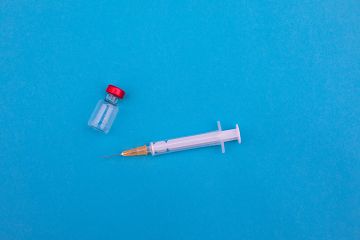World’s second malaria vaccine comes at a critical time for child survival
3 October 2023
In a major milestone in the fight against malaria, the Oxford R21/Matrix-M malaria vaccine received the World Health Organization (WHO)’s recommendation for use in children at risk. This moment paves the way for global rollout alongside the existing arsenal of safe and effective tools to combat malaria and improve child survival.
Malaria is among the leading causes of death in children under-five, who are the most vulnerable to the disease and more likely to suffer severe consequences from infection because their immune systems are not fully developed. Early and effective diagnosis and treatment are essential to avoid developing severe symptoms.
"The availability of the R21 vaccine opens the door to programme implementation, at-scale, for the populations who need it most. It is crucial to consider unique strategies for roll-out, especially in highly seasonal setting, to ensure that peak-effectiveness aligns with peak-risk. The addition of vaccines into the arsenal of powerful malaria prevention tools is moving us one step closer to malaria elimination,” commented Katherine Theiss-Nyland, Malaria Consortium’s newly appointed Technical Director.
Malaria Consortium plays a leading role in tackling malaria and other key diseases among vulnerable populations and believes that continued support and investment in the research and development of vaccines and other lifesaving tools can accelerate progress towards achieving zero malaria.
The Jenner Institute at the University of Oxford developed the R21 to protect children living in areas where malaria is a public health risk from the most common and deadly form of the disease, Plasmodium falciparum. The WHO’s recommendation, approved by the global advisory bodies for immunisation and malaria – the WHO Strategic Advisory Group of Experts on Immunization (SAGE) and the WHO Malaria Policy Advisory Group (MPAG) – was dependent on a full evidence review for feasibility, safety and impact.
The evidence found that R21 reduced symptomatic cases by 75 percent during the 12 months following a three-dose series in areas with highly seasonal transmission. R21 had good efficacy when given as part of an age-based vaccine schedule. A fourth dose a year after the third was also shown to maintain efficacy.
Prices of R21 range from US$2 to US$5 per dose, making this comparable with other recommended malaria interventions and childhood vaccines. Overall, 28 African countries have already added malaria vaccines to their national immunisation programmes. Demand for the first malaria vaccine, expected to reach some African countries by early 2024, exceeds supply. There is no evidence that one malaria vaccine performs better than the other and R21 is anticipated to follow in mid-2024.
Photo by Markus Spiske
Related content
5 May 2023
New modelling analysis helps answer questions about optimising use of perennial malaria chemoprevention and its use in combination with RTS,S
6 October 2021WHO recommends RTS,S/AS01 malaria vaccine for children in sub-Saharan Africa
8 September 2022R21 malaria vaccine gives up to 80 percent protection
Vaccines: The cornerstone of disease burden reduction
Latest news
- Malaria Consortium honoured by Ugandan government for contribution to combat malaria23rd April 2024
- International summit calls for AMR accountability in public health interventions21st March 2024
- Global SMC community celebrates new milestone at SMC Alliance Annual Meeting in Nigeria6th March 2024
- Scaling up key interventions could halve pneumonia-related childhood mortality13th February 2024
- Malaria Consortium and eGov Foundation join Mozambique’s national malaria programme to digitalise seasonal malaria chemoprevention campaigns8th February 2024
- World’s first malaria vaccine rollout launched in Cameroon22nd January 2024